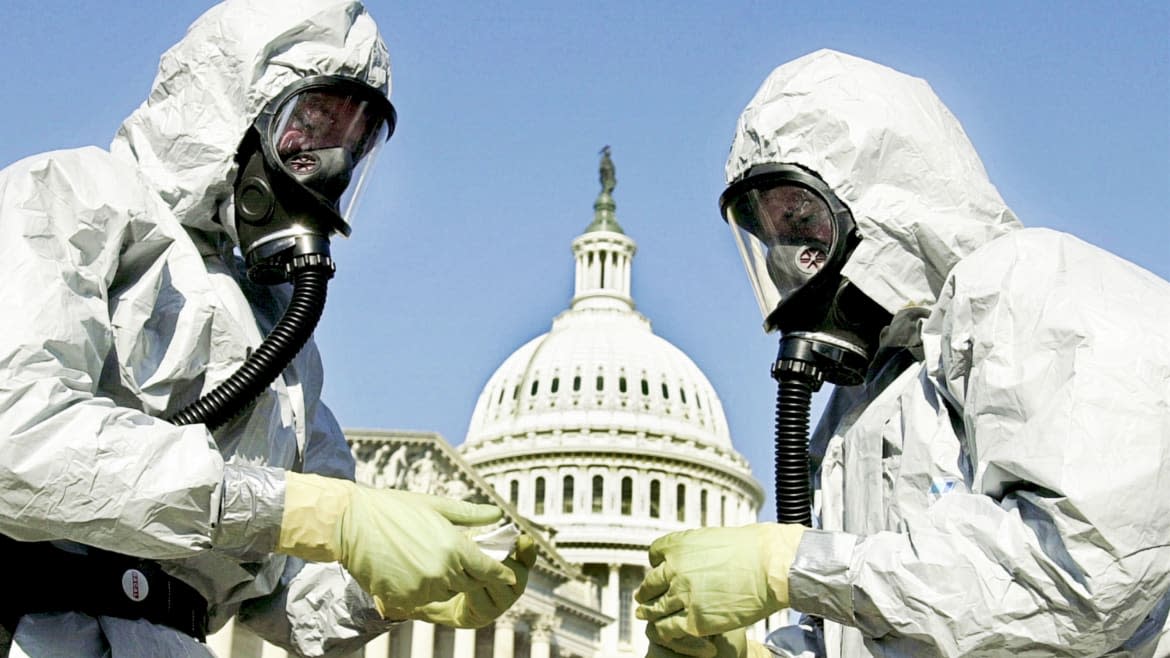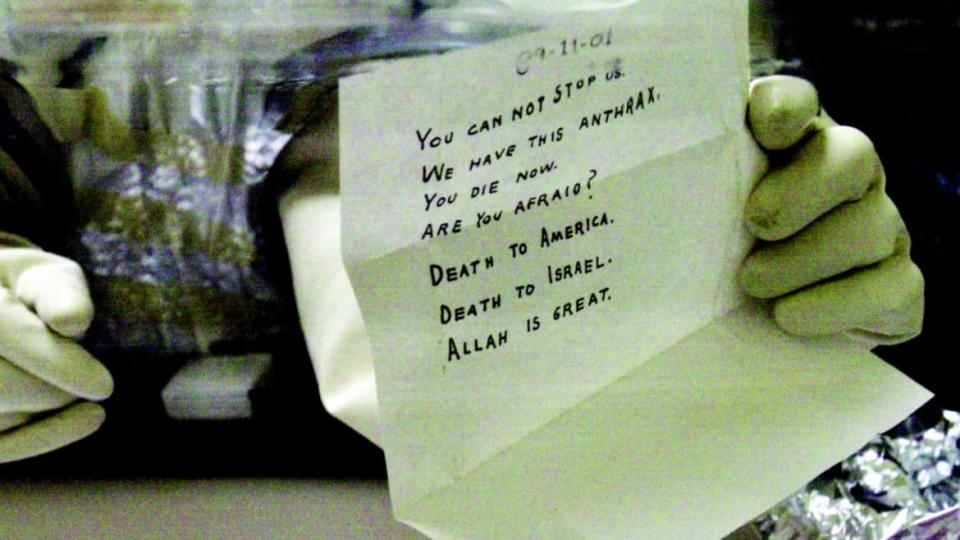We May Never Know Who Carried Out the Deadly Anthrax Attacks

- Oops!Something went wrong.Please try again later.
In the wake of 9/11, an immediate second wave of terrorism gripped America via a series of letters, sent through the United States Postal Service, that contained anthrax, resulting in five deaths and 17 additional infections. The first of those victims, photojournalist Bob Stevens of Boca Raton, Florida, contracted the disease on Oct. 4, 2001. Six years, nine months and 19 days later, the FBI broadcast to the public the name of the person they believed was the culprit: Bruce Edwards Ivins, a senior researcher at the United States Army Medical Research Institute of Infectious Diseases (USAMRIID), whose RMR-1029 flask was determined to contain anthrax spores that were genetically linked to those mailed throughout the country. In what turned out to be one of the largest and most expensive investigations in FBI history, an answer was finally attained—even if, days before the bureau’s press-conference announcement on Aug. 6, 2008, Ivins had taken his own life.
The Anthrax Attacks: In the Shadow of 9/11 is not, however, a clear-cut tale. Premiering on Netflix on Sept. 8, Dan Krauss’ documentary is a mystery without an airtight conclusion since, as it lays out, the Department of Justice never got to prove its theory in a court of law—and, to this day, questions remain about Ivins’ supposed guilt. Those doubts stem from the facts of the case and also from two apparent, prior federal government mistakes: the delay in closing down, in a safe and timely manner, the Brentwood postal facility that had handled anthrax letters sent to Senator Tom Daschle and which killed two employees, Thomas Morris Jr. and Joseph Curseen Jr.; and the six-year-long inquiry into bioweapons expert Steven Hatfill, on whom the FBI could never pin the attacks. Taken together, it’s a snapshot of scientific sleuthing as well as an exposé of a law enforcement effort riddled with errors—and devoid of a satisfyingly persuasive wrap-up.
A Hacker Said He Had Proof the CIA Caused the Anthrax Attacks. They Had Him Arrested for Child Porn.
The Anthrax Attacks efficiently contextualizes its tale in a post-9/11 climate of fear and paranoia born from a sense—especially in New York City—of ever-present danger. Those anxieties became real when Stevens was infected with anthrax through a letter sent to his office, and other such missives subsequently arrived in the mailrooms of NBC (addressed to Tom Brokaw) and The New York Post, and the offices of Senators Daschle and Patrick Leahy. The envelopes contained a brown sugar-sand powder that was identified as anthrax and handwritten missives that proclaimed, “Death to America / Death to Israel / Allah is Great.” A political intent was difficult to miss, and authorities soon deduced that the letters had been sent from Princeton, New Jersey—in particular, a single mailbox that tested positive for anthrax spores.

While suspicions naturally centered on al Qaeda, scientific analysis of the spores indicated that they were a match for the Ames strain of anthrax, which only originates in American laboratories. Thus, the focus quickly shifted to our own medical agencies, including USAMRIID, the employer of Ivins, an eccentric but renowned expert on anthrax whose quirkiness often led people to shrug away his weird behavior as “Bruce being Bruce.” At least in the beginning, Ivins was happy to help investigators, who were caught in a unique situation: tasked with looking into USAMRIID scientists at the same time that they had to rely on their assistance, since agents weren’t qualified to parse complex scientific fact from fiction. Still, though the anthrax strains were traceable back to USAMRIID, the FBI—in 2002—turned its attention to Hatfill, a former Army researcher who supposedly had a checkered professional record and was bitterly mad at the government.
The media swarmed on Hatfill, egged on by the FBI and Department of Justice, and yet he was never charged; instead, he eventually settled a $5.8 million lawsuit for his public vilification. That outcome was better than what Brentwood workers received from their employers, who kept their facility open for 10 days after it was learned that anthrax had passed through its doors (and machines)—a situation that some claim left them with lingering medical conditions. In both of these strands, The Anthrax Attacks contends that investigative missteps led to the unintended and serious harm of innocents, and that also extends to Ivins, who committed suicide after learning that he was in the FBI’s crosshairs—a state of affairs that had exacerbated his not-inconsiderable mental health struggles.
The Anthrax Attacks’ primary formal flourish is casting Clark Gregg as Ivins in staged recreations based on actual emails and FBI field notes. Those deliberately self-conscious sequences depict Ivins as an individual who was angry and more than a bit creepy, the latter highlighted by his strange relationship with a female colleague and his long-standing grudge against a North Carolina sorority because, decades earlier, one of its members had rejected him. All of this paints an unflattering portrait of Ivins as a bizarre and potentially deranged scientist, even if it falls short of definitively establishing his liability for the anthrax attacks. No matter—following his death, the FBI boldly declared that he was their man, and then shortly thereafter closed the case and destroyed all remaining evidence.
Considering that his flask was ground zero for the anthrax that killed Americans, as well as a host of other circumstantial factors, Ivins was a reasonable and strong suspect. Nonetheless, The Anthrax Attacks suggests that he was far from the only person capable of committing this crime, given that many others had access to his flask, he was never linked to the Princeton mailbox, and he had no great motive for murder (save for some reported hatred of New York, which was possibly expressed, in code, in the anthrax letters). Even today, FBI agent Vince Lisi is confident that Ivins was behind the mailings. Yet others, such as colleague Paul Keim, continue to think otherwise, a sentiment shared by the National Academy of Science, which determined that “it is not possible to reach a definitive conclusion about the origins of the anthrax.”
The truth, it seems, is perpetually out of reach. Just as haunting about The Anthrax Attacks, though, is the lingering notion that with regard to issues of national security, it may be unattainable due to our own shortcomings.
Get the Daily Beast's biggest scoops and scandals delivered right to your inbox. Sign up now.
Stay informed and gain unlimited access to the Daily Beast's unmatched reporting. Subscribe now.

